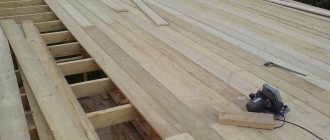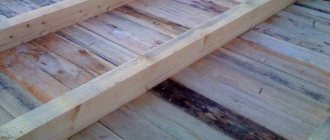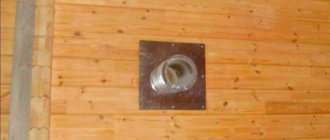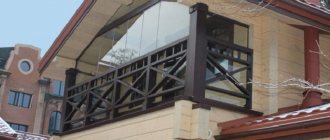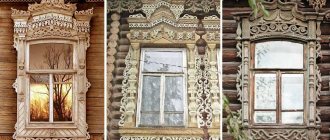Hot chocolate capsules Nescafe Dolce Gusto Chococino, 8 servings
334 ₽ More details
Nesquik Opti-Start instant cocoa drink, 250 g (package)
125 ₽ More details
Designer sconces
It's hard to be human | Haig Matt
389 ₽ More details
To my sisters. About those who will suffer | Nekrasova Evgenia Igorevna
452 ₽ More details
English language 9th grade tests
Warm floors in a living space mean comfort, coziness, and a healthy atmosphere. Modern buildings are designed using the latest technologies and are often equipped with heated technical rooms. The floor thermal insulation layer added during construction retains heat throughout the entire house and relieves owners from the hassle of additional floor insulation.
In private wooden buildings the situation is completely different. Outdated residential buildings often do not have an insulated floor above the cold basement. Often, owners carry out repair work themselves and insulate floors and ceilings in the basement with their own hands.
Why insulate the floor
In old wooden houses, cold cellars and vegetable storage facilities are always used. Such rooms, located below floor level, in most cases have a small thickness of the floor covering layer and cause a lot of trouble for the owners.
There are several ways to insulate a floor
Without an insulating layer, cold air and dampness come from under the floor all year round. This situation has a detrimental effect not only on human health - it affects the condition of the materials from which wooden floors and wooden floor boards are laid. Rotting processes also develop in wood.
It becomes noticeable that the wood is rotten, dilapidated, and on the log ceiling of the cellar you can see logs blackened by fungus. Until they finally turn into dust, the owner is faced with a completely solvable problem: how to replace the floors and what materials to use for this purpose.
Installation of insulation
When laying polystyrene foam, a special cement adhesive is used.
If you decide to insulate the basement with your own hands, then we have compiled step-by-step instructions with photographs especially for you:
- We clean the walls from dirt and debris, carefully seal all seams, eliminate imperfections and defects;
We clean and tidy up the walls.
- We cover the walls with a deep penetration primer;
We prime the walls.
- We take a sheet of expanded polystyrene (or polystyrene foam), cut off the locks from the left end (if installation is carried out from left to right) and apply glue to the sheet with a dosing spatula with teeth;
Apply glue with a notched trowel.
- We press the sheet against the wall and fix it with dowels. We hammer the disc-shaped dowels into the left corners and in the middle;
We press the sheet against the wall and fix it.
- Take the next sheet, apply glue, press it to the wall. We make sure that the locks on the edges of the sheet coincide, and each subsequent sheet should cover the locks of the previous one, and not be inserted under them. We hammer in the dowels in the left corners and in the middle;
We hammer the dowels into the covering lock.
- We complete the first row. We start the second row with half a sheet to offset the seams. Here, when fixing, we hammer in only two dowels - in the lower left corner and in the middle, the remaining corners will be pressed by the following sheets, which will cover the locks near them;
Remember about the displacement of seams.
- We cover the entire wall. We move on to the next wall and gradually complete the installation of insulation throughout the entire room. We cover the foam plastic with a reinforced fiberglass mesh, which we coat with a thin layer of glue;
Coat the mesh with glue.
- Using the grid, we plaster the walls, onto which we apply the previously selected finishing coating (wallpaper, putty, decorative plaster, etc.).
Using the grid we carry out the finishing of the walls.
Methods for insulating the floor above the basement
To ensure that the basement does not cause trouble during further operation, the ceilings in the basement are replaced. Next, insulation work is carried out, and the choice of insulation, as well as insulation methods, is approached very thoroughly. The process includes not only insulating the ceiling and floor on the basement side, but also insulating the floor directly above the basement.
This is interesting: ways to insulate a basement ceiling from the inside.
In this video you will learn more about insulation: The process depends entirely on the design features of the building. A residential private house does not always have a basement. Insulation measures are carried out directly on the ground, since the thermal engineering calculation involves organizing a ceiling above the basement on the side of the house. During construction work, the quality and characteristics of the materials used should be taken into account.
Foundation ventilation
Even a foundation that is well insulated from the inside does not eliminate the danger of high levels of humidity forming in a confined space. To prevent such a negative phenomenon, you should properly organize the ventilation of the basement. This is especially important for the foundation of a bathhouse, where there is constant high humidity.
Ventilation can be natural or forced.
To circulate air in the foundation or in the basement, small through openings equipped with covers are installed slightly above the surface of the soil composition. With their help, when organizing constant control of humidity and air temperature, they regulate air movement. From the inside of the basement, the vents are covered with steel mesh to prevent rodents from entering.
Some people prefer to use automated systems for ventilation. As a rule, such equipment is installed in large basements. The automatic system independently controls the moisture content in the air, activating or disabling forced ventilation.
What material is the floor insulated with?
The construction and installation of floor slabs is carried out in various ways, which, like the materials offered, are sufficient. It all depends on the features of the structure, individual requirements, owner preferences and financial capabilities. Many insulating raw materials have high-quality properties, good characteristics, and during operation receive only high marks.
Expanded polystyrene
Industrial enterprises produce several types of special slabs that can be used for insulation. When choosing a material, you must pay attention to the purpose of the room and the further load on the floor.
At the initial stage of the process, a thick layer of gravel is laid on the base of the prepared surface, which is covered with a concrete screed. Next, the floor is waterproofed. At the last stage, a wide, soft and comfortable roll of material is stretched.
Extruded polystyrene foam
These boards contain more durable materials. Construction raw materials have a high density and are used when it is necessary to support large weights and loads.
Expanded polystyrene practically does not absorb moisture; it is used in places even with high groundwater levels. The easy-to-use material is attractive due to its low price and does not require the help of special equipment during the work.
Polyurethane foam boards
Of the large number of tiled insulation materials offered, the best option is only rigid materials with a uniform structure and closed cells. They perform floor insulation with such building material more efficiently, in a short time and without extra costs.
Some types of insulation are covered with foil
Some types of polyurethane foam boards are covered with aluminum foil or fiberglass. Such additions increase thermal insulation properties, reduce moisture permeability and distinguish foam plastic from other similar materials.
Mineral wool
Rigid cotton wool boards are chosen as thermal insulation in a wooden house. The material is characterized by high resistance to deformation. You can install such an insulation system yourself, since the entire installation process will not take much time. The fibrous material absorbs moisture well; it is laid out over an unheated basement between two waterproofing layers. To insulate floors in residential premises, it is recommended to use ten-centimeter thick mineral wool.
Expanded clay
Bulk air material can replace three layers at once in insulating a home floor: concrete base, gravel, thermal insulation. Fill the drainage in layers, periodically compacting each layer. At the end, the expanded clay is poured with a solution of cement and sand. When the three-centimeter crust has hardened, waterproofing insulation and concrete screed are laid under the finished floor. After the insulation work has been completed, they begin laying the laminate.
Foam glass
Proper insulation with this material is carried out as follows:
- lay out a ten-centimeter gravel layer;
- pour concrete screed;
- a special adhesive composition is applied to the ends of the insulating blocks;
- After the glue has dried, the heated floor structure is installed.
In rooms with high humidity, to enhance waterproofing, roofing felt, two layers of polyethylene film, and a cement screed are laid over foam glass. Such actions are usually carried out if the final flooring is made of ceramic tiles.
Granulated slag
The material has high thermal insulation properties, but the by-product of iron smelting contains harmful impurities. In the construction and insulation of country houses, they use material that has undergone careful processing and has a document confirming compliance with regulatory requirements.
The slag is laid directly on leveled ground, without the use of waterproofing. The thickness of the layer should be 40 cm. Next, lay a layer of insulation. The poured concrete screed completes the process. The flooring can be laid out from any material you like.
Ecological wool
Fluff pulp is convenient in the work process. The environmentally friendly material is not damaged by rodents, insects, or fungi. When wet, it does not lose its protective properties, does not shrink, and when ignited, does not support the fire, but smolders. The material is used in dry form and with a solution.
This wool is easy to install
Types of thermal insulation
Before you start insulating the basement from the outside, you need to decide what the thermal insulation will be used for - at the moment there are many types of it, but all of them perform an insulating function for the house.
Each method has its own advantages, disadvantages and technical characteristics.
From the point of view of applicability in work when the basement floor of a house is insulated, the following materials can be selected:
Base insulation with polystyrene foam
These materials are the most affordable options available. The barrier to heat will be polystyrene foam of any brand with a density of at least 25 kg per cubic meter.
It is widely used due to its lightness, resistance to putrefactive processes, low thermal conductivity, moisture resistance, and long service life.
Due to these characteristics, base insulation with foam plastic is most often used in home improvement.
There is also a limitation in the use of the material - it cannot be used where there is a high risk of fire. This is due to its fire hazard, as well as the release of toxic substances during combustion.
Application of extruded polystyrene foam
This method, unlike the first, is well suited both for insulating the outside of houses during the construction process, and for already built houses.
Expanded polystyrene is mounted on top of the waterproofing layer
Extruded polystyrene foam is glued to the base directly on top of the waterproofing. If the house is quite old, you will also have to open the foundation, dig around it, re-waterproof it and then insulate it. In addition, it is also advisable to insulate the blind area, which will prevent freezing of the soil in contact with the foundation and reduce the risk of seasonal deformations of the house. If you act even more thoughtfully, you can combine the process of insulating the blind area with the installation of a drainage system (if you take care of the outflow of groundwater from the foundation, you won’t have to worry about its safety for a very long time).
Technology for insulating the floor above the basement in a private house
The basement of a house can be used or not. It can be warm or cold. But regardless of the condition of the basement, the floors in the house must be warm. The work carried out on floor insulation in a private house has significant advantages:
- The consumption of heating media is reduced.
- A comfortable temperature regime is established in the room.
- Rotting and damage to floor structures does not begin between the slabs and the floor walls.
- There are no fungal deposits or mold on the foundation and walls.
- After the service life has expired, cosmetic finishing, repairs and arrangement do not take much time and money.
There are many technologies for insulating the floor above the basement, but the fastening methods for each material are different. When installing reliable thermal protection, it is necessary to observe the order of layers, which are the same for all existing methods. You should also take a responsible approach to the choice of materials and strictly follow all manufacturer’s recommendations.
Main difficulties and thermal insulation
How to insulate the basement floor taking into account all relevant standards and technical parameters, but using a normal thermal insulation system? At first glance, this is difficult, and sometimes even impossible, but in reality there is nothing overly complicated here. It is important that all requirements, and such source materials, are studied. And for the correct choice of insulating material, in turn, you should inquire about the properties of the foundation.
Expanded polystyrene is one of the most popular materials today, and when using it you will encounter only one difficulty - the correct selection of thickness. In principle, normal companies that sell this heat insulator should advise which thickness is most suitable. So, the thermal insulation is ready, all that remains is the finishing touches. If stone, tiles, etc. are used for this, then all this is attached with glue to the reinforcing mesh. As an option, the foam can simply be coated with a cement-sand primer. After this, the surface is painted with textured plaster.
That's all, good luck with your insulation and have a warm winter!
Features of insulating the basement ceiling of an apartment building
All proposed methods and materials are relevant for basement floor insulation in private homes. In apartment buildings, owners of first-floor housing are often interested in how realistic it is to insulate the ceiling in the basement, when these premises are not personal property.
Living in an apartment with a basement underneath, residents are faced with the problem of cold floors, dampness and mold. Laying an insulating layer in an apartment causes high costs for insulation and forced replacement of the flooring. Also, this situation forces the owner to limit the thickness of the insulation layer if the apartment has low ceilings.
To carry out work on insulating the ceiling in the basement of an apartment building, residents will need a lot of effort, time, and patience to collect all kinds of permits and certificates. It is not a fact that the planned enterprise will be effective and positive.
Reasons not to do this
Before making a decision about insulating the base from the inside, you should take into account the fact that this option is acceptable only for buried types, in which the underground part creates the basement of the household.
In construction practice , there are several good reasons why carrying out such types of work is inappropriate :
- According to calculations of the thermal insulation “pie”, it has been proven that reinforced concrete structures will still freeze, even with an insulating layer laid.
- The foundation will not be protected from temperature changes, which will lead to its destruction.
- In accordance with calculations, the “dew point” will be established at the “insulation-foundation” boundary, which will require additional means to create a vapor-tight and ventilation layer in the heat-protective “pie”.
Thermal protection of the foundation from the inside is a necessary measure, used only when an external thermal protection device is installed ineffectively or is impossible for good reasons and when calculations have proven that its use will lead to the thermal efficiency of the house.





